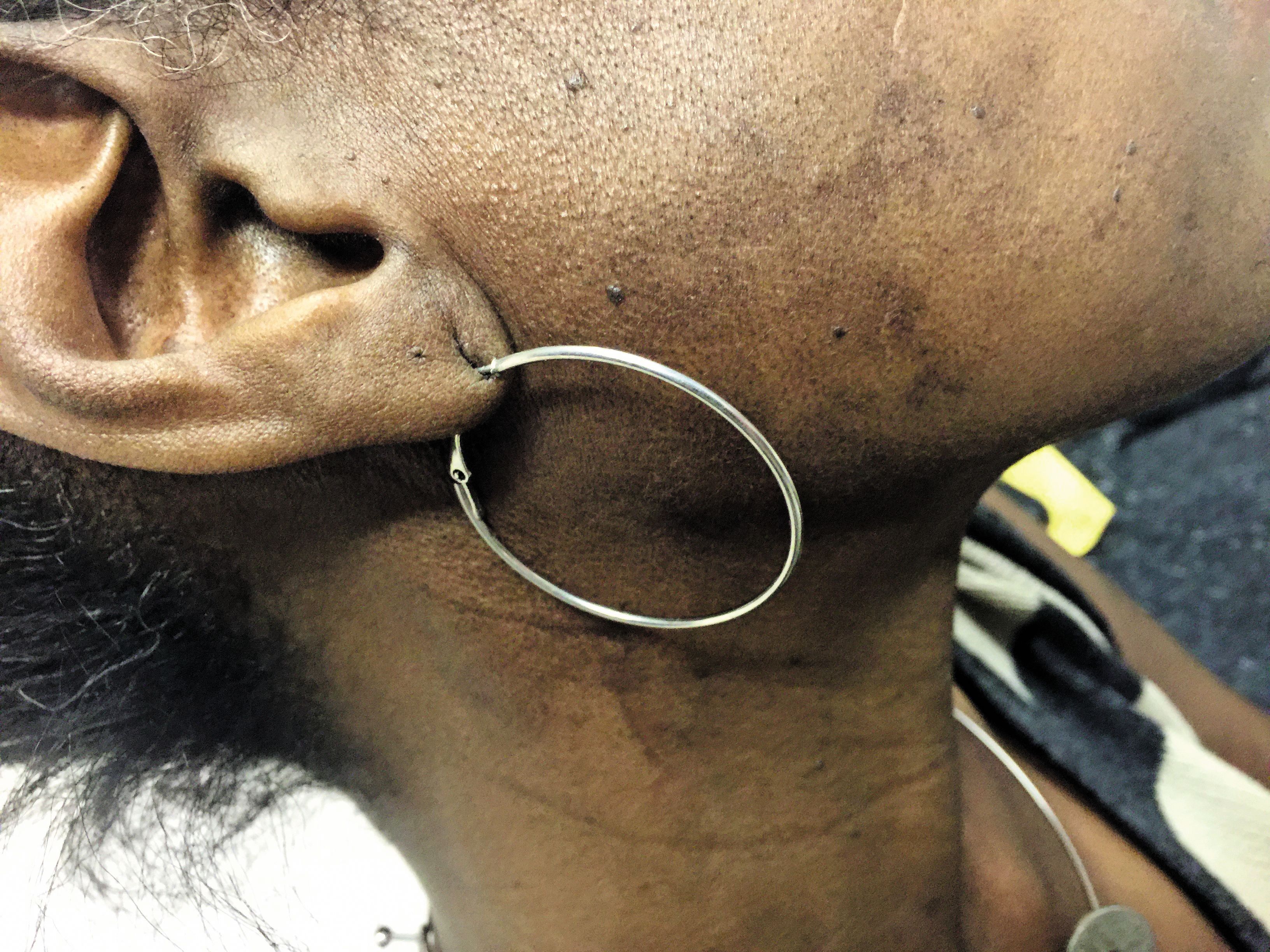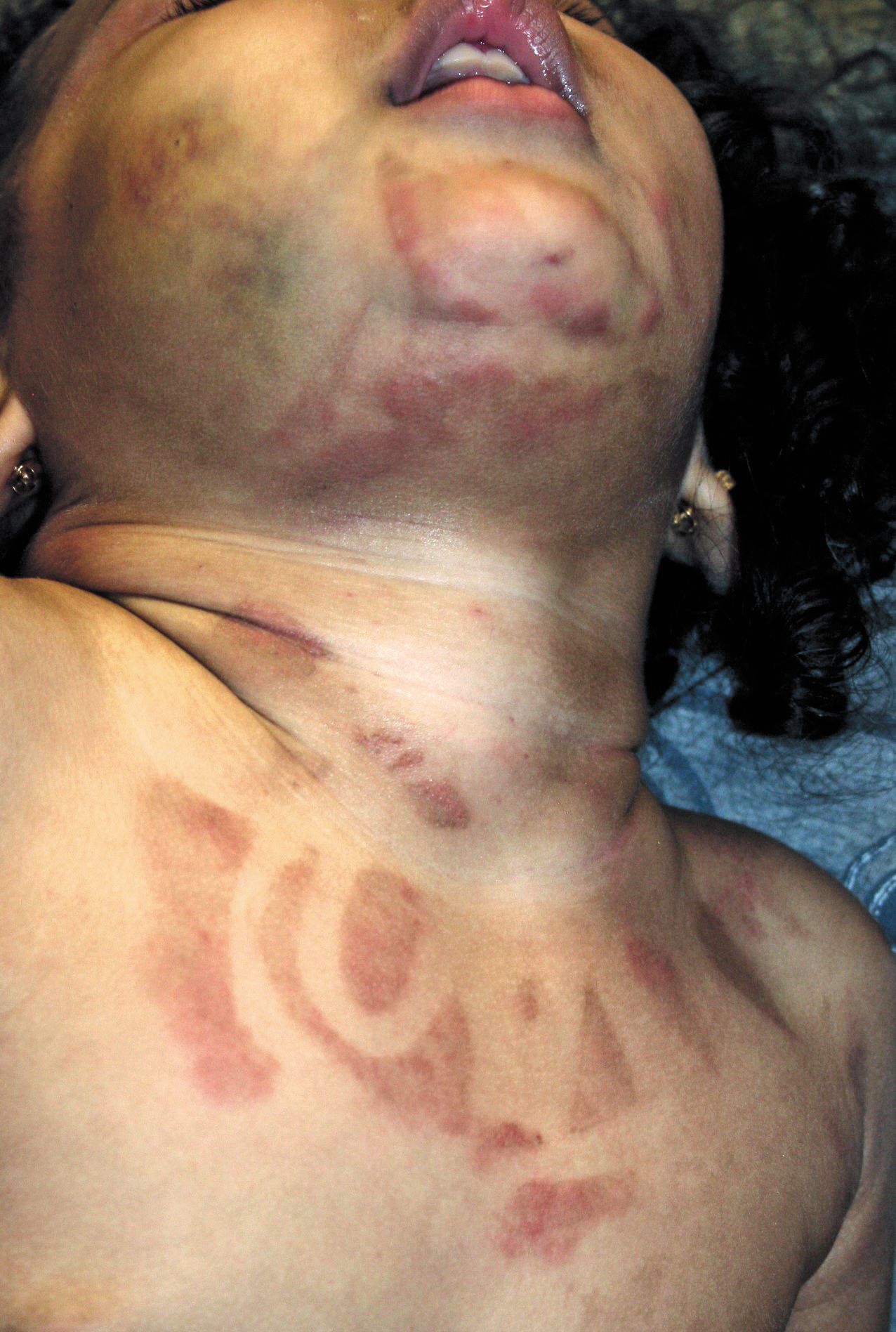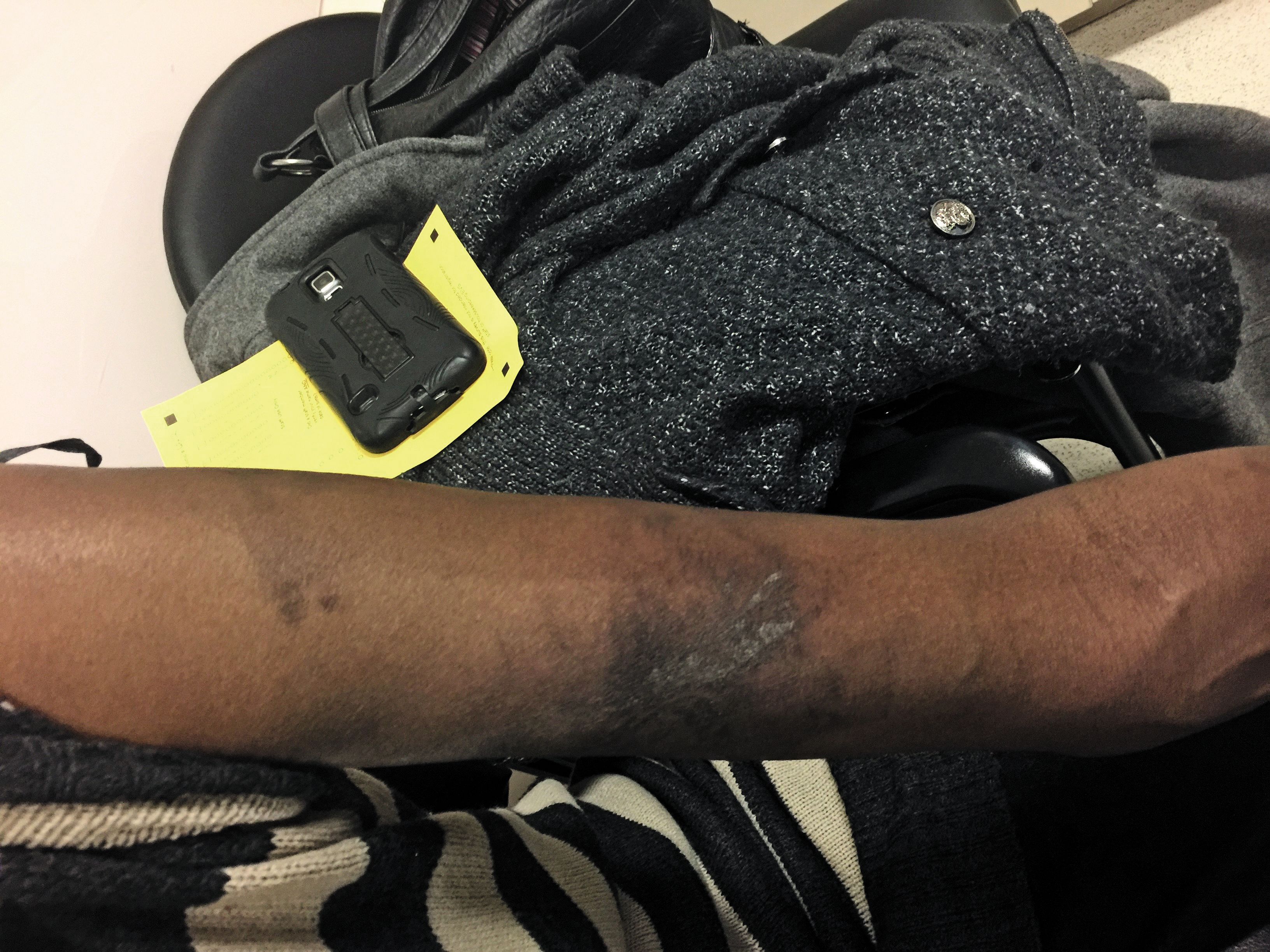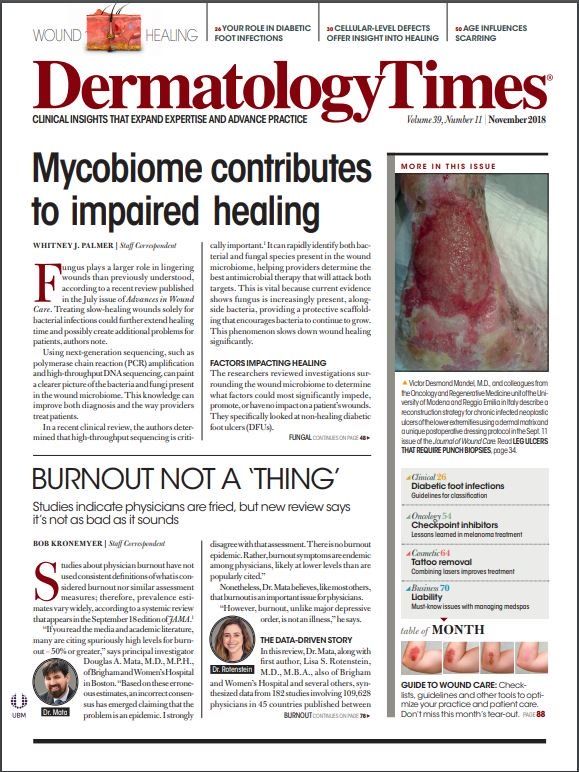- Case-Based Roundtable
- General Dermatology
- Eczema
- Chronic Hand Eczema
- Alopecia
- Aesthetics
- Vitiligo
- COVID-19
- Actinic Keratosis
- Precision Medicine and Biologics
- Rare Disease
- Wound Care
- Rosacea
- Psoriasis
- Psoriatic Arthritis
- Atopic Dermatitis
- Melasma
- NP and PA
- Skin Cancer
- Hidradenitis Suppurativa
- Drug Watch
- Pigmentary Disorders
- Acne
- Pediatric Dermatology
- Practice Management
- Prurigo Nodularis
- Buy-and-Bill
Publication
Article
Dermatology Times
Low-dose bleomycin injections result in curious side effect
Author(s):
Low-dose bleomycin injections used to treat venous and venous lymphatic malformations might have an unanticipated side effect, according to recent research.
Patient shown with a hyperpigmentation side effect that can occur after being treated for venous malformations with a low dose of bleomycin. This side effect may appear in places where a patient’s skin experienced minor pressure or trauma. In most cases, the hyperpigmentation resolves with time, says Bernard Cohen, M.D., professor of pediatrics and dermatology, Johns Hopkins University, Baltimore. (Photo courtesy of Bernard Cohen, M.D.)

Patient shown with a hyperpigmentation side effect that can occur after being treated for venous malformations with a low dose of bleomycin. (Photo courtesy of Bernard Cohen, M.D.)

Patient shown with a hyperpigmentation side effect that can occur after being treated for venous malformations with a low dose of bleomycin. (Photo courtesy of Bernard Cohen, M.D.)

Low-dose bleomycin injections used to treat venous and venous lymphatic malformations might have an unanticipated side effect: curiously-shaped hyperpigmentation, researchers reported at the International Society for the Study of Vascular Anomalies’ (ISSVA’s) annual workshop in Amsterdam.
“One of the standards of care in the interventional radiology community for patients with venous and venous lymphatic malformations is to inject a very, very low dose of bleomycin,” said Bernard Cohen, M.D., professor of pediatrics and dermatology, Johns Hopkins University, Baltimore, who presented with colleagues on several case studies.
Providers tend to favor bleomycin treatment for patients with these malformations because of the low risks for intense inflammation or ulceration. The chemotherapy agent causes a clot to form, often making the malformation disappear. The treatment carries lower risk of scarring, pain and inflammation than with other agents, including alcohol according to Dr. Cohen.
However, pigmentation may appear in places where a patient’s skin experienced minor pressure or trauma. The pigment, for example, might be in the shape of electrocardiography (EKG) leads, tape or the neckline of a hospital gown.
Dr. Cohen tells patients to avoid putting pressure on their skin in the weeks following treatment and to use sunscreen to protect from darkening.
“It’s important to explain to these patients that while bleomycin injection for venous and venous lymphatic malformations is safe and not likely to make a scar or an ulcer, it may leave some pigmentation,” he said.
In most cases, the hyperpigmentation resolves with time, he said.
REFERENCES:
Milbar HC, Jeon H, Ward MA, et al. Hyperpigmentation Secondary to Bleomycin Sclerotherapy: A Case Series. International Society for the Study of Vascular Anomalies 22nd Annual Workshop, May 29 to June 1, 2018, Amsterdam, http://www.issva.org/.







